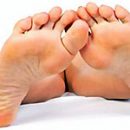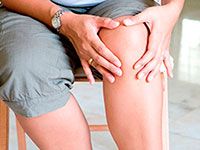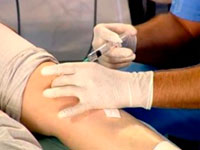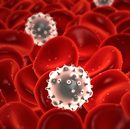The pain in the heel feels like that the nail is inserted into it - this is a symptom of heel spurs (ICD - M77.3). The reason for the development of the disease is the inflammation of the plantar fascia, leading to the formation of osteophytes. Why does the heel spur appear?
Content
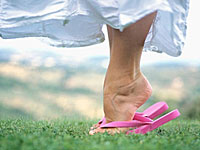 Plantar fasciy — The disease developing with inflammation of the plantar fascia, a wide bundle, which is fastened from one side to the heads of tie bones, and on the other — to the pile of heal bone. This powerful bundle holds the longitudinal arch of the foot and is experiencing colossal loads, because at her vertical position of a person accounts for half its weight! What is surprising that the plantar fascia is often injured, degenerates and partly replaced by rude fabrics, forming a picture typical of heel spurs.
Plantar fasciy — The disease developing with inflammation of the plantar fascia, a wide bundle, which is fastened from one side to the heads of tie bones, and on the other — to the pile of heal bone. This powerful bundle holds the longitudinal arch of the foot and is experiencing colossal loads, because at her vertical position of a person accounts for half its weight! What is surprising that the plantar fascia is often injured, degenerates and partly replaced by rude fabrics, forming a picture typical of heel spurs.
Plantar fasciys are often called the heel spur. But although the clinical picture of the heel spurs (ICD — M77.3) resembles the symptoms of fascia, in fact, the formation of bone spike — a consequence of long-term inflammation of the plantar fascia, and to put between two diseases the sign of absolute equality would be incorrect.
Why does the heel spur appear?
Subscribed overloads, the plantar fascia is quite often injured. Factors contributing to the formation of heel spurs (causes of fasci):
- Overweight, creating additional load on the foot and deforming vaults.
- The pathology of the spine, its curvature, leading to the displacement of the center of gravity of the body, an increase in the load on the legs and the formation of the heel spur. A photo of a suton, a hungry man comes to the idea of an existing combined problem of the spine and stop.
- Diseases of the joints of the lower extremities, accompanied by the redistribution of the load on the foot, often become a hidden cause of the heel spur.
- Flatfoot, leading to the tension of the plantar fascia and microtrams.
- Actually injuries of the heel bone and the adjacent part of the plantar fascia.
- Blood impairment of the lower limbs leading to degenerative processes in the tissues of the legs, «drawing» Pictures of the heel spur and other diseases of the feet.
- Gout, as a disease, accompanied by metabolic disorders and deposition of uric acid crystals in various tissues, including the plantar fascia, which is actually the heel spur (ICD — M77.3).
- All factors that increase the loads at the foot, for example, sports, activities requiring long-term standing work, lifting and transferring weights. Models, and indeed high-heel lover often become the owners of heel spurs. Even in the photo, heels who manage to wear women look frightening, not to mention the real load on the arms of the foot. True, justice It is worth noting that the wear of the shoes on an absolutely flat sole can also be attributed to factors due to which the heel spur appears. Causes of the disease lies in developing among lovers «slippers» Flatopy.
Clinical pictures: Heel Spur and Plantar Fascitions
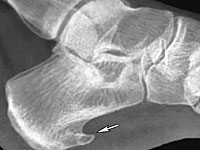 The microtraums of the plantar fascia in the field of its attachment to the heel bone lead to the development of the plantar fasci and the appearance of pain in the heel area. At this time, painses are associated with inflammatory changes in tissues and therefore anti-inflammatory treatment quite effectively eliminates the symptoms of the disease. However, each subsequent injury causes the body «Strengthen the faint place», Gradually, forming bone tissue in a problem area of fascia. So the heel spur is formed, the photo of which resembles the beak of the bird, directed towards the foot of the foot.
The microtraums of the plantar fascia in the field of its attachment to the heel bone lead to the development of the plantar fasci and the appearance of pain in the heel area. At this time, painses are associated with inflammatory changes in tissues and therefore anti-inflammatory treatment quite effectively eliminates the symptoms of the disease. However, each subsequent injury causes the body «Strengthen the faint place», Gradually, forming bone tissue in a problem area of fascia. So the heel spur is formed, the photo of which resembles the beak of the bird, directed towards the foot of the foot.
Now the plantation fasci has already existed independently without needing «Support from the outside». The solid heel spur recalls itself in every step, ruthlessly inserted into the soft tissues of the heel and causing severe pain, reminiscent of pricks with a nail.
To reveal the disease, it is enough to make an X-ray picture, the heel spur (M77.3 in the ICD) will be clearly visible as a sharp spike on the heel bone. Radiography — Mandatory study in the case of plants and heel spurs, since pain in the heel may also be caused by changes in systemic inflammatory diseases, rheumatoid arthritis, Reiter syndrome and other diseases.


